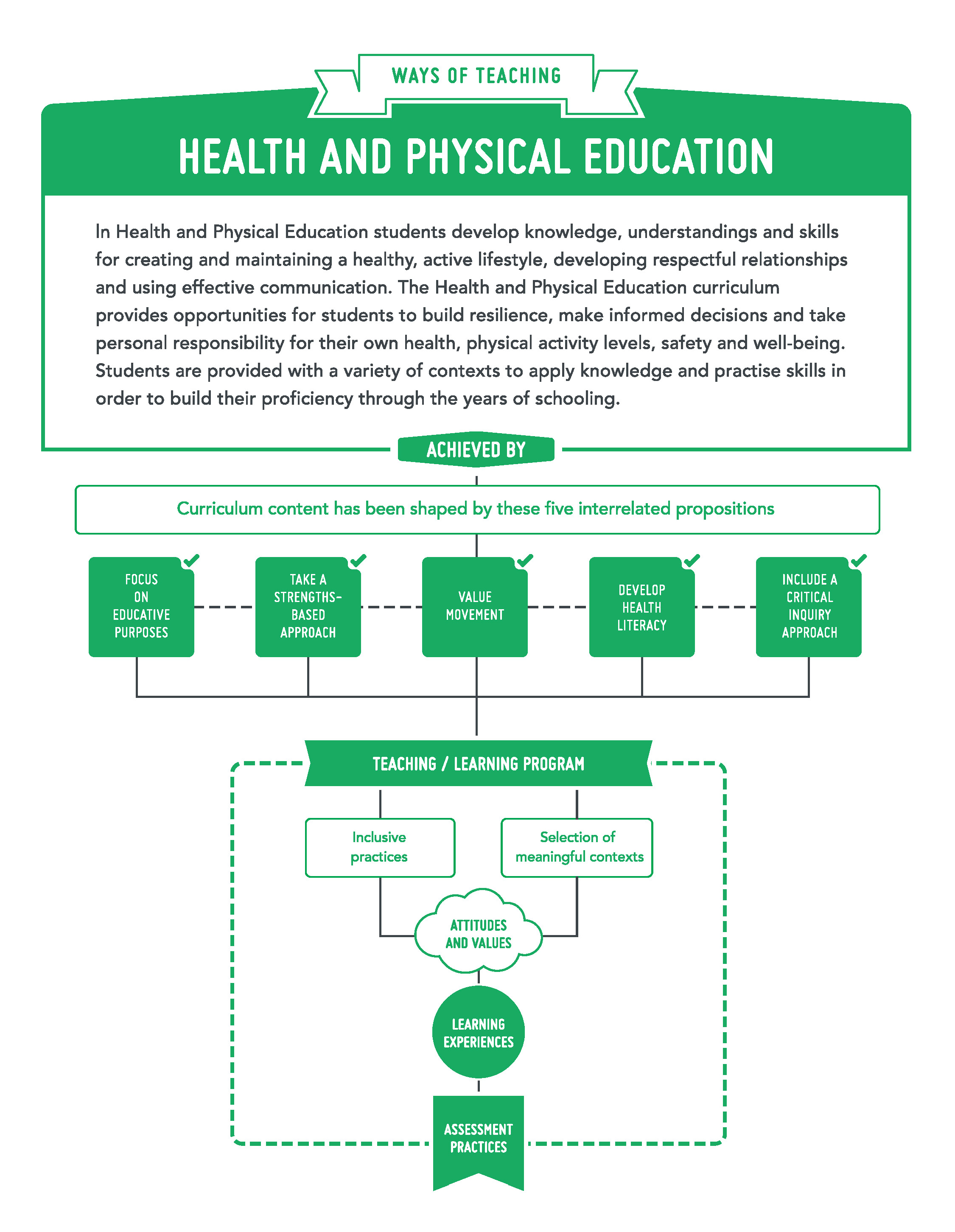Ways of Teaching
The 'ways of teaching' aim to support teachers with planning for curriculum delivery across the years of school, with the teaching in each year extending learning in previous years.
The 'ways of teaching' complement the principles of teaching and learning in the Western Australian Curriculum and Assessment Outline (http://k10outline.scsa.wa.edu.au/). The principles focus on the provision of a school and class environment that is intellectually, socially and physically supportive of learning. The principles assist whole-school planning and individual classroom practice.
In Health and Physical Education, the two strands of Personal, social and community health; and Movement and physical activity, are closely interrelated. Consistent with a strengths-based approach, a successful Health and Physical Education program is one where teachers select ongoing contexts that are accessible and meaningful to students as a focus for building on their particular strengths and interests.
Teaching and learning programs should include a balance of health and movement-related content.
To support students' learning, teachers should plan programs to ensure that:
- in the early years, the focus is on the holistic nature of children's development (as distinct from learning divided into subjects)
- in the early years, planning includes child-initiated, self-directed activities
- students are provided with opportunities to develop movement skills which are included and reinforced throughout the year
- students develop a health literacy skills approach to their learning
- students work both individually and collaboratively to explore, reflect and adapt skills and strategies
- teaching and learning experiences related to the Personal, social and community healthstrand reflect school policies and protocols. Specific content may be sensitive to cultural and/or religious groups.
To engage students in Health and Physical Education, teachers typically create learning experiences which:
- draw on students' personal interests, real-life experiences or use stimulus materials to create meaningful linkages to the outside world
- include current and/or recent health and physical activity events, issues or 'hot topics' that are relevant to young people to exemplify content
- use new and emerging technologies to engage students and facilitate the development of critical health literacy skills
- provide opportunities for research and investigation which support the development of critical inquiry skills such as generating evidence-based arguments and proposing actions/solutions to real-world health and physical activity challenges and issues
- involve students in learning outside the classroom through exposure to authentic experiences and the facilitation of connection points with the local and wider community
- integrate health-related content and skills into other learning areas, particularly in the primary years, to allow for holistic learning
- adapt to the skill level of the students, such as through the modification of warm-up drills and skill development activities
- engage students in problem-solving in a variety of movement challenges
- develop students' knowledge of health and performance-related concepts related to physical activity
- enable students to develop interpersonal skills used in physical activity.
Figure 2 is a visual representation of 'ways of teaching' Health and Physical Education
For information on how to collect evidence to inform planning for ongoing learning experiences in Health and Physical Education, refer to 'Ways of Assessing'.

 HPE P–10 Scope and Sequence for teaching in 2024
HPE P–10 Scope and Sequence for teaching in 2024